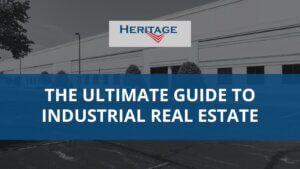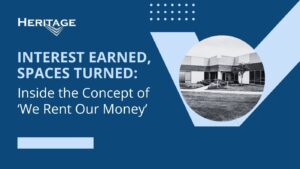We understand the power of compounding as one of the most powerful forces in the universe. That sentiment is often attributed to Einstein, and for good reason—it is true. Small, consistent growth can lead to substantial change over time.
When we apply this concept to financial growth, such as compounding rents by 2% a year, we are looking at very safe and favorable outcomes ten years down the line. The idea is to aim for steady, manageable growth. Expecting 5 to 10% growth every year can be unrealistic and unsustainable. But if you can consistently grow something by 2 or 3% annually, that is achievable and powerful in the long run.
Consider real estate investment as an example.
We have this concept where with 35% equity and 65% debt on a property, we only need its value to increase by a third to double our equity. Let us do some math—if property values rise by just 3% per year compounded over ten years, that is more than a third due to compounding because it is not just simple addition; it is exponential growth—3% on top of another 3%, and so on.
Achieving around a 2.75% compounded annual growth rate could feasibly double your equity value in ten years without even considering distributions from profits or rent income. Add those distributions into the mix, and you have likely tripled your money in that timeframe.
However, there is a caveat when it comes to higher rates like 5 or 6%. They are not inherently bad in isolation or short bursts but expecting such high rates every year is not realistic and may indicate other economic factors at play—like inflation—that could negatively impact other aspects of your investments.
Our next investment is under contract. Please join the waitlist for priority access when the deal goes live.
Aim for “Stealth Wealth”
It is important to remember there are consequences for everything: too much debt or too little debt; rents set too high or too low—there are repercussions everywhere. But if you manage slow and steady growth within that sweet spot of 2 to 3% range annually compounded, it is subtle enough that nobody really notices day-to-day while being profoundly impactful over the span of a decade.
The irony is that one of the most significant changes—a substantial increase in wealth over time—is achieved through a process so gradual that it is nearly imperceptible year-to-year. This stealth approach mirrors what many refer to as "stealth wealth," where outward signs of affluence are not obvious yet substantial wealth is being accumulated quietly in the background through smart strategies like compounding.
Making 'stealth wealth' is not about flashy displays; it is about understanding and harnessing the silent yet formidable power of compounding over time.
Follow and Anticipate Demand
There are countless factors that influence the market at any one time, like cap rate compression. We saw the reverse in the two year period prior to early 2024, which was somewhat of a relief valve. But even absent that, our economy grows; this country grows about 1% a year in population or every 10% every decade, which right now is over 30 million people a decade.
They are going somewhere; they are doing business; they need homes; they need offices; they need goods delivered; they go on vacations and stay in hotels. This demographic force is huge and besides compounding, it is another powerful force positively enhancing future growth prospects for commercial and residential real estate assets.
Even when we have had blow-ups like the Great Recession or the Savings and Loan crisis in the early '90s or more recently inflation after Covid, things settle down. During Covid, we collectively brought demand forward for about three years – we consumed cars, homes, renovations – because the government gave us all this money to do it.
So, what happens? You stretch out the rubber band too much or eat too much food and your stomach expands – you need to digest that food; the rubber band needs to come back.
The Ideal Hold Period for Real Estate
History has shown growth, but nothing moves in a straight line. We need to ride out the downs and not get too excited at the ups because everything moves back to trend, and that trend is up.
The ideal hold period is what is right for the deal and what is right for the partners. If you have a partner at a private equity fund needing to turn their money every five years and incentivizes you with an Internal Rate of Return (IRR), it makes sense to sell it or recapitalize it somehow.
What we try to do is create streams of income because having multiple streams means you can continue compounding them and growing them while also keeping an eye on safety due to the awesome power of diversification, another one of the forces that will drive success in the long-term.
Keep in mind that when you sell property, you lose a stream of income and potentially pay taxes if no Section 1031 Exchange is utilized and recreating streams is not always easy.
Depending on where you are in your career or how close you are to retirement affects how long you would want to hold onto properties - using Section 1031 Exchanges helps grow business by reinvesting tax-deferred amounts. We were essentially reinvesting the government’s money and creating more streams of income- which has ended up being very profitable for Heritage and its investment partners.
The hardest task in the investment process is getting control of the opportunity. After closing and executing on the business plan, paying out consistent distributions, we must also think about ther ability to replicate these cash return on the next investment. It may be best for all to refinance, return some/all of the investment and continue to hold for income growth.
In other cases, we expect to keep some properties indefinitely if they have low leverage and cash flow well. Others may get sold if there is trapped equity not earning its return due to market conditions prompting us to take it off table reinvesting elsewhere for higher returns, and potentially doubling income at the same time.
Tax Benefits in Real Estate Investing
When we underwrite a deal, we do not include the tax benefits in our calculations. The deal must stand on its own merits without relying on tax benefits. We consider those a bonus. If you are investing solely for the tax benefits, that is a different approach altogether. Our focus is on distributions and tangible growth.
That said, we are always very aware of the tax advantages.
We maximize our depreciation through cost segregation studies, which allow us to accelerate depreciation by classifying parts of a property like windows, doors, and carpets into categories with shorter depreciation schedules compared to the standard 39.5-year schedule for buildings.
This strategy can significantly front-load depreciation in the first 5 to 10 years of owning a property, sheltering much more income from the property.
Deferral, Not Forgiveness
It is crucial to clarify that when we talk about sheltering income through depreciation strategies such as cost segregation studies, it results in deferral rather than forgiveness of taxes. The basis of the property is reduced accordingly and upon a capital event such as sale or exchange, you would then recapture that previously claimed depreciation.
When it comes to leveraging savings via a 1031 exchange, for example, if you have depreciated your property basis significantly thanks to aggressive cost segregation strategies and then engage in a 1031 exchange, you essentially defer paying taxes on those gains while using what feels like 'the government’s money' for further investments – compounding your investment advantages over time.
As for accepting 1031 exchange money into our deals here at Heritage: under certain circumstances, absolutely! In those cases we would need to structure it differently using something known as Tenants in Common (TIC). This allows investors coming from an exchange context to keep realizing their tax deferral benefits within our structures while aligning their expectations with those of other partners in terms of hold periods and investment terms.
While tax benefits play an important role and we strive to maximize them where possible within legal confines and without compromising compliance standards – they are not at the core of our investment rationale. Instead, these benefits serve as an added incentive atop solid investment opportunities evaluated primarily on their standalone potential for growth and income generation.
Conclusion
By targeting modest but consistent growth rates within the 2 to 3% range annually compounded, we aim for the 'stealth wealth' that accumulates quietly yet significantly over time. Plotting a long course and riding out market fluctuations allows Heritage to deliver sustainable growth rather than fleeting gains.
Our strategy is amplified by our attentiveness to demographic trends, diversification for safety, and prudent financial structuring like leveraging Section 1031 Exchanges effectively to optimize tax advantages without sacrificing the integrity of our investment decisions. Ultimately, by harnessing these principles with unwavering focus on creating robust income streams and capital appreciation, Heritage Capital turns the awesome power of compounding into real-world prosperity for our investors.
Our formative years in the early '90s taught us invaluable lessons about hands-on management, conservative financial practices, and the importance of understanding market dynamics—a knowledge base that has become our bedrock. Through strategic debt structuring, risk management, and comprehensive market analysis, we ensure each property acquisition aligns with our conservative yet optimistic outlook. Our track record highlights not just the numbers but also the human elements—trust, communication, strategic location—that are integral to successful real estate investment.



